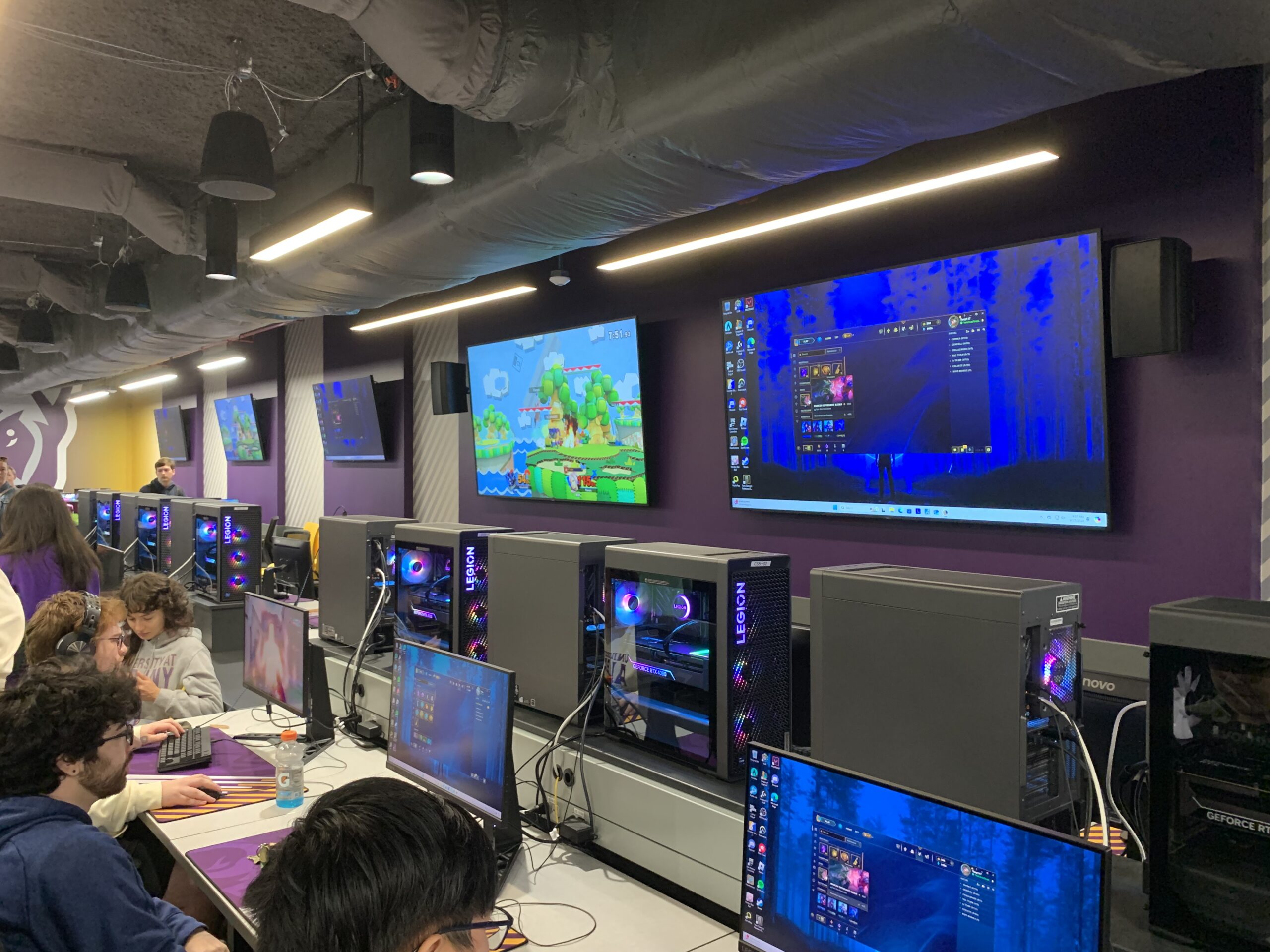The Esports Trade Association (ESTA) Conference: Insights into the Future of Esports and Education
- Dec 02, 2024

The Esports Trade Association (ESTA) Conference: Insights into the Future of Esports and Education
The Esports Trade Association (ESTA) conference, held in Chicago earlier this year, provided a comprehensive look at the evolving landscape of esports, with a strong emphasis on its integration into education. As a long-standing member of ESTA, Shen Milsom & Wilke (SM&W) attended this year’s event to gain valuable insights into the dynamic relationship between Esports, education, and business. Over the past three years, the esports industry has faced challenges such as defining its identity, developing sustainable business models, and understanding its potential in the educational sector. This conference shed light on many of these ongoing struggles while highlighting new opportunities for growth and collaboration.
Key Themes of the Conference
The 2024 ESTA conference focused on several critical themes that reflect the multi-dimensional nature of esports today:
• Engagement and Inclusion
• Diversity
• Collaboration and Sponsorship
• Recognition as a Sport
• Complexity Beyond Gaming
• Branding
• Coming of Age
These themes underscore the evolution of Esports—not only as a form of entertainment but as a thriving sector with diverse career pathways and a growing role in education.
Observations and Insights
The Growth of Esports and Its Business Models
Esports has experienced rapid growth as both a competitive and entertainment platform. However, despite this growth, the development of financial models to support the industry remains a significant challenge. While major competitions continue to generate substantial revenue, smaller venues and operators often struggle to stay financially viable. Many rely on sponsorships, memberships, and partnerships to sustain operations.
Several prominent brands, including Coca-Cola, Dell, Verizon, and others, have introduced sponsorship programs to support both professional Esports teams and educational initiatives. These programs foster community development and extend the impact of Esports beyond gaming arenas. Additionally, universities are increasingly partnering with local businesses and sponsors to create mutually beneficial ecosystems that support both athletes and educational institutions.
Career Pathways in Esports
A key takeaway from the conference was the recognition that Esports offers far more than just competitive gaming. The industry’s complexity has given rise to a wide variety of career opportunities across multiple disciplines, including:
• Broadcasting
• Journalism
• Marketing
• Team and Player Management
• Branding and Sponsorship
• Data Analytics and IT
• Cybersecurity and Networking
• Finance and Social Media
These emerging career pathways highlight how Esports intersects with a range of industries. Educational institutions play a critical role in preparing students for these opportunities, offering courses and training that provide valuable, real-world skills.
Educational Integration of Esports
Educational institutions are increasingly recognizing the value of Esports as both a teaching tool and a career development platform. Many schools are now offering degree programs and specialized courses in Esports management, game design, broadcasting, data analytics, and marketing, among others. This alignment with industry needs ensures that students gain practical, job-ready skills.
Examples of Esports-related coursework include:
• Esports Management: Event planning, team management, sponsorship acquisition, and legal considerations.
• Game Design and Development: Principles of game mechanics, design, and programming.
• Esports Broadcasting: Techniques for live streaming, commentary, and audience engagement.
Esports also plays a key role in enhancing STEM (Science, Technology, Engineering, and Mathematics) education. Students can learn coding and programming through game development, and they can apply data analytics to improve performance and understand game strategies. As Esports programs continue to grow, there is a rising emphasis on integrating technical skills into curricula, ensuring that students are well-prepared for the future workforce.
The Role of Scholastic Esports
Scholastic Esports is gaining momentum, with school districts, universities, and colleges across the country forming teams and leagues. These programs are designed with a focus on academic achievement and sportsmanship, encouraging students to balance gaming with their educational responsibilities. The growing student interest in esports has led to increased institutional recognition of Esports as a legitimate extracurricular activity.
Key factors driving this growth include:
• Increased student interest and participation
• Support from the Esports industry
• Recognition by educational institutions as an integral part of student life
Moreover, Esports is proving to be a powerful recruiting tool—not only for competitive teams but also for social and academic engagement. It helps connect students with their peers and fosters a strong sense of community. Photos below includes work that we recently completed for State University of New York at Albany. When this academic institution decided to build a new arena for its award-winning Esports team, they knew that the audiovisual systems needed a state-of-the-art design. Comprised of 46 gaming stations, a viewing area and stage for competitions and community involvement. To optimize the gaming experience, as well as future-proof the facility for the future in Esports, SM&W recommended a fiber-based AV over IP system. Each gaming computer and console in the facility is connected to an AVoIP matrix. The matrix allows audio and video to be sent to in-room displays for critique and practice while simultaneously being transmitted to an adjacent broadcasting space for streaming. Coaches can control the system with an iPad, selecting which player becomes active on the displays.
To support the audiovisual systems, gamers and space adaptability, the IT Infrastructure team designed the structured cabling system (SCS) to deliver the bandwidth needed for each gaming station as well as maintain flexibility. By designing the space using a creative and systemic mindset , our firm was able to distribute fiber optic and copper cabling to bench style seating without permanently locking the gaming stations in place. This will allow for future changes and growth in the arena as it organically happens.
Dedicated Esports Facilities
As Esports programs expand, many institutions are investing in dedicated facilities. These spaces are equipped with high-performance gaming PCs, consoles, and high-speed internet connections, creating an immersive environment for collaboration, creativity, and skill development. Esports facilities are also essential for building community among students and supporting the broader esports ecosystem.
Business Models for Esports Venues
In addition to educational institutions, private Esports venues are emerging as a popular option for gamers outside the academic environment. These venues, however, face their own set of challenges in developing sustainable business models. Membership fees alone are not sufficient to cover operational costs, so successful venues are incorporating multiple revenue streams, including:
• Monthly subscriptions
• Food and beverage services
• Hosting tournaments and events
• Attracting both in-person and remote audiences
• Securing sponsorships
These strategies help diversify revenue streams and create a more sustainable foundation for Esports operations, both educational and commercial.
Challenges and Opportunities
The rapid growth of Esports presents both challenges and opportunities. Ensuring equitable access to Esports opportunities is a critical issue, especially for underfunded programs. Another challenge is the need for qualified educators and coaches, as schools look to expand their Esports offerings.
Despite these challenges, the future of Esports in education appears promising. As demand for skilled professionals in esports and related industries continues to grow, educational institutions are well-positioned to provide the necessary training and career pathways for the next generation of Esports leaders.
Conclusion
The ESTA conference demonstrated that Esports is more than just a form of entertainment—it is a dynamic field with significant educational and career development potential that extends far beyond gaming itself. By integrating Esports into the curriculum, schools can provide students with a hands-on, engaging learning experience, equipping them with the skills needed to thrive in an increasingly digital and competitive world.
Shen Milsom & Wilke (SM&W) is committed to supporting the continued growth of Esports in education. With our expertise in space design, system integration, and community-building, we aim to help institutions navigate the evolving Esports landscape and create environments that foster student success.
Esports & Education Virtual Conference Insights
In addition to the onsite conference, the Esports & Education Virtual Conference held online in early November, explored further insights into the growing importance of Esports in educational settings, including:
• The need for schools to adapt their facilities to meet the growing popularity of Esports programs, which are now seen as an essential part of student recruitment and engagement.
• The role of Esports in promoting diversity, inclusion, and leadership within the broader educational community.
• The growing recognition that Esports offers a wide range of career opportunities “beyond the game,” while playing a crucial role in developing STEAM skills among students.
As Esports continues to evolve, the opportunities for education and career development within the field are limitless. Institutions that embrace these changes will be well-positioned to empower students and help them succeed in the digital age.




